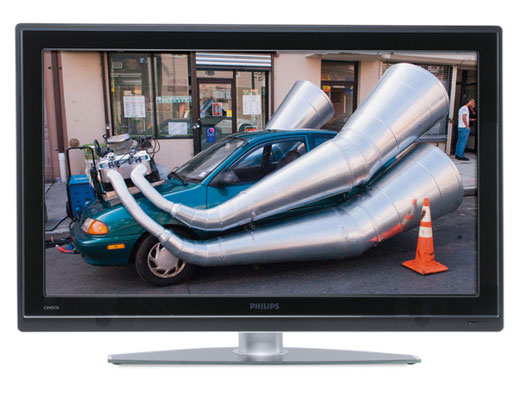Ease of use
As well as that new tech, the TV comes with a completely new remote control. It’s robust, laid-out well and offers problem-free control.
The Ambilight function can be set to various modes by a dedicated button. Easiest on the eye is a relaxed constant colour mode, which outputs soft light from each side permanently. It changes hue with every new image, but it’s far subtler than this set’s dynamic mode. With the light changing in intensity and colour, Ambilight can be distracting, but it can also be switched off very easily.
Calibration really couldn’t be easier There’s a choice of cool, normal or warm and the temperature of each hue can be customised and saved.
In fact, all of the advanced features, such as Perfect Pixel HD or HD Natural Motion, can be set to high, low or just switched off, depending on your personal taste.
Picture
Put to work on a recording of Ganges from the BBC HD channel, it’s immediately obvious that Philips has created a very natural picture. Close-ups enjoy a terrific level of detail, while only the quickest and harshest of camera pans suffer from any discernable judder. Vertical pans in particular create a blur and it’s fair to say that Philips hasn’t yet solved LCD technology’s most persistent problems.
It’s a decent effort though, and Perfect Pixel drags out more than enough detail from the superlative scenery and high-octane river shots.
The colour palette has indeed been increased to something close to reality. Shots of tigers, peacocks and monkeys are all natural-looking, while human skin tones are particularly impressive.
Fast action of a totally different kind is also treated well: 1080p pictures from Pro Evolution Soccer look stunning fed from a Xbox360 Elite.








